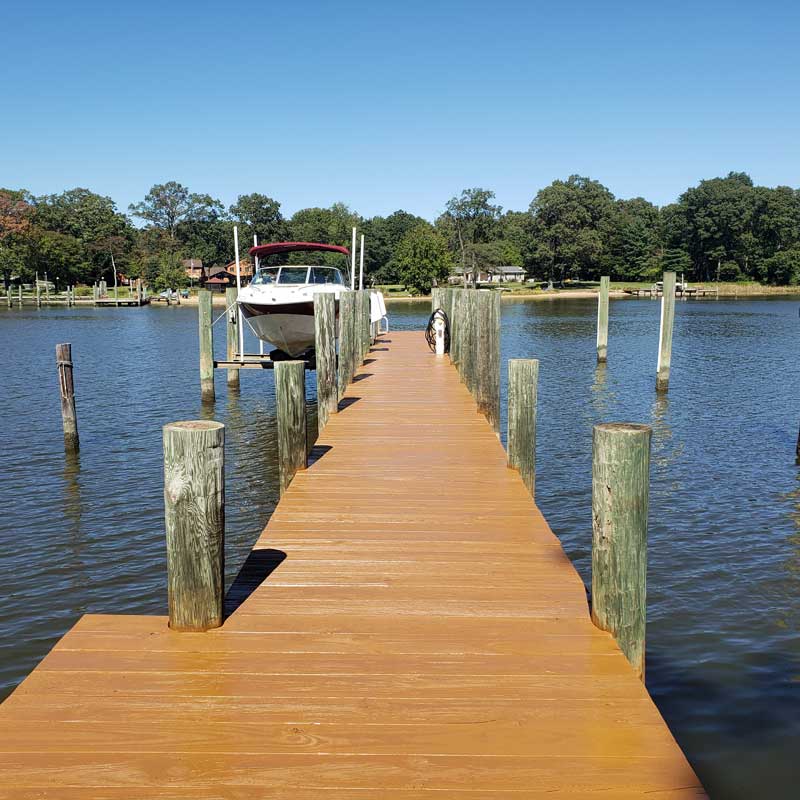Effective Dock Repair Techniques: Ensuring Structural Honesty
Making certain the structural honesty of docks with effective repair service techniques is vital for the longevity and security of aquatic facilities. Ultimately, selecting the ideal repair products, such as corrosion-resistant alloys and composite materials, is important for resilience.
Analyzing Dock Damage
Analyzing dock damage is an important primary step in making certain the structural stability and safety and security of any docking center. This initial examination involves an extensive assessment to recognize both concealed and noticeable damages. Key elements to take a look at consist of the dock's foundation, pilings, decking, and hardware. Each component has to be scrutinized for signs of wear, rot, rust, or various other kinds of destruction that could jeopardize the structural integrity.
Architectural engineers or qualified inspectors usually carry out these assessments using specialized tools and strategies. For example, underwater inspections could use finder equipment or remotely ran automobiles (ROVs) to discover submerged damage. Above water, visual examinations are matched by using dampness meters and various other diagnostic devices to discover underlying issues not quickly noticeable to the nude eye.

Choosing Repair Materials
Picking the proper repair work materials is an essential step in the dock restoration procedure, one that directly affects the durability and performance of the fixed structure. Product choice must be driven by variables such as environmental conditions, load-bearing needs, and compatibility with existing dock components.
In enhancement to wood, composite products are significantly popular as a result of their longevity and low maintenance demands. Composites, commonly made from a blend of plastic and timber fibers, provide superb resistance to rot, bugs, and UV damages. For metal anchors, choosing corrosion-resistant alloys such as galvanized steel or marine-grade light weight aluminum is vital to prevent rust and ensure structural honesty in saline water conditions.
Epoxy materials and marine-grade sealants are vital for fixing cracks and securing joints, giving a waterproof barrier and enhancing the dock's general stamina. By diligently selecting premium products, dock fixings can achieve lasting results, consequently guarding against future degradation and guaranteeing risk-free, trustworthy usage.
Architectural Support Strategies
Effective structural support strategies are essential in making certain the security and durability of dock repair work. This method is particularly reliable for docks exposed to heavy lots or extreme environmental conditions.
An additional necessary method is the application of fiber-reinforced polymers (FRP) These materials offer high strength-to-weight proportions and superb resistance to deterioration, making them optimal for reinforcing concrete or wood docks. FRP can be used in sheets or strips and bound with epoxy resins to boost structural honesty.
Bracing and anchoring systems likewise play a vital role in architectural support. Cross-bracing, using steel or wooden beams, can counteract side forces, reducing persuading and activity. Anchoring systems, such as helical piers or driven heaps, supply a stable structure by transferring tons to much deeper, a lot more secure soil layers.
Last but not least, the combination of load-distribution plates can aid distribute weight extra uniformly throughout the dock's surface, alleviating localized anxiety factors. These methods jointly ensure that docks continue to be robust and risk-free, with the ability of withstanding the rigors of their functional environment.
Advanced Repair Work Approaches

An additional advanced technique involves undersea welding, which permits fixings to be performed without the demand to dewater the location. This technique is especially helpful for attending to architectural concerns in immersed dock parts, making certain marginal disturbance to operations. Improved welding methods, coupled with robotic systems, supply accuracy and dependability, thus extending the life-span of the dock.
In addition, cathodic security systems are executed to prevent deterioration in metal dock structures. By utilizing sacrificial anodes or satisfied existing systems, these methods effectively mitigate the electrochemical procedures that cause material deterioration.
Lastly, progressed tracking technologies, such as architectural health and wellness monitoring (SHM) systems, give real-time information on the condition of dock frameworks. These systems allow proactive upkeep and timely treatments, ultimately making certain the long-lasting architectural stability of the dock.
Maintenance and Avoidance
Maintenance and avoidance are fundamental principles that underpin the longevity and safety and security of dock structures. Routine inspections are vital, permitting early discovery of wear and tear, possible weaknesses, and environmental influences. A positive approach, entailing routine look for corrosion, rot, and structural changes, reduces pricey repairs and extends the dock's functional life.
Preventive procedures should consist of using protective layers to metal elements to defend against rust and utilizing cured timber to resist decay. Furthermore, making certain proper drain and air flow can protect against water accumulation, which is a common cause of architectural destruction. Including quality materials and adhering to producer guidelines throughout building and construction and repair phases likewise play important functions in improving longevity.

Training employees in dock upkeep best methods ensures consistent application of preventative steps. Leveraging technical advancements, such as drones for assessments and sensing units for real-time monitoring, can even more boost upkeep efforts. By focusing on maintenance and avoidance, dock proprietors can make certain structural stability, operational safety and security, and affordable management over the dock's lifespan.
Verdict
In verdict, preserving the structural honesty of you can check here marine facilities demands detailed dock repair service strategies. Advanced repair work techniques, paired with routine maintenance methods, guarantee the dock continues to be operational and risk-free under diverse ecological problems.
Making certain the architectural integrity of anchors with efficient repair service methods is vital for the longevity and safety and security of marine facilities.Choosing the appropriate fixing Continue materials is an essential step in the dock restoration process, one that straight affects the longevity and performance of the repaired structure.Reliable architectural support strategies are essential in making sure the security and longevity of dock repair work. By focusing on upkeep and avoidance, dock proprietors can make certain structural integrity, functional safety, and affordable management over the dock's life-span.
In final thought, keeping the structural honesty of aquatic facilities necessitates detailed dock fixing strategies.